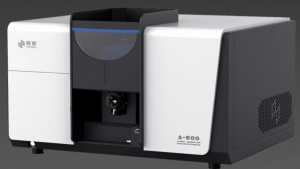The lead content in blood (blood lead) is an important indicator to measure the level of lead exposure in the human body. As a toxic heavy metal, lead can cause harm to human health even at low concentrations, especially having a significant impact on children and pregnant women.
Blood lead levels are measured in micrograms per deciliter (μg/dL), with slightly different standards among various institutions:
For children (0-18 years old):
- The US CDC recommends that levels ≥5μg/dL require attention (there is no “safe threshold,” but lower is better);
- Chinese standards: ≥10μg/dL is considered lead poisoning (classified as mild, moderate, and severe, with ≥45μg/dL being severe).
For adults:
- Normal range: <10μg/dL;
- Occupational exposure limit: In China, intervention is required when the blood lead level of occupational exposed persons is ≥40μg/dL.
As early as 2006, the Ministry of Health of China issued the “Guidelines for the Classification and Management of Childhood Hyperleademia and Lead Poisoning (Trial),” which clearly defined the poisoning levels as follows:
“Childhood hyperleademia and lead poisoning are diagnosed based on children’s venous blood lead levels.
Hyperleademia: Two consecutive venous blood lead levels of 100-199μg/L;
Lead poisoning: Two consecutive venous blood lead levels equal to or higher than 200μg/L; and it is classified into mild, moderate, and severe lead poisoning based on blood lead levels.
Mild lead poisoning: Blood lead level of 200-249μg/L;
Moderate lead poisoning: Blood lead level of 250-449μg/L;
Severe lead poisoning: Blood lead level equal to or higher than 450μg/L;
Childhood lead poisoning may be accompanied by certain non-specific clinical symptoms, such as abdominal dull pain, constipation, anemia, hyperactivity, and impulsivity; when blood lead levels are equal to or higher than 700μg/L, it may be accompanied by manifestations of lead encephalopathy such as coma and convulsions.”
Challenges and Standards in Blood Lead Detection
In this infant blood lead incident, there were significant differences in blood lead data provided by different institutions or hospitals, affecting the judgment results.
Due to issues such as limited blood sample volume, operational convenience of instruments, and cost investment, graphite furnace atomic absorption spectrophotometers are currently the most suitable instruments for blood lead detection. Because blood contains a large amount of proteins, organic substances, and other components, which easily generate background signals during testing. The standards for blood lead testing using graphite furnace atomic absorption method recommend two background correction techniques (deuterium lamp/Zeeman). Background correction technology can effectively remove interference from sample matrices, improve detection sensitivity, and ensure the accuracy of test data. However, the relative standard deviation range of deuterium lamp background correction is 1.5%~5.3% (n=6), which is higher than that of Zeeman background correction technology (1.6%~2.8%, n=6). Therefore, the Zeeman background correction atomic absorption method can obtain more accurate blood lead data.
Technological Support: Accurate Detection by Persee A500 Zeeman Atomic Absorption Spectrophotometer
Persee has been deeply engaged in the field of atomic absorption spectrophotometers for nearly 30 years, and thus has conducted sufficient data validation on the detection methods of lead in blood and additives, which can be used for reference.
- Standard Substance Method – Determination of Lead in Blood
Reference standard: “GBZ/T 316.1-2018 Determination of Lead in Blood Part 1: Graphite Furnace Atomic Absorption Spectrometry”
Detection equipment: A500G Zeeman Graphite Furnace Atomic Absorption Spectrophotometer
Standard substances: GSB 04-1742-2004 Lead Single Element Solution Standard Substance
Standard samples: Freeze-dried bovine blood lead and cadmium component analysis standard substances; GBW09139 (107±15μg/L), GBW09140 (318±12μg/L)
Experimental conclusion: The above data show that the correlation coefficients of the calibration curves of the two graphite furnace atomic absorption methods are both >0.999, with good linearity. The quantitation limits are both lower than 20 μg/L specified in the detection standard method. The test results of freeze-dried bovine blood standard substances are within their marked ranges.
- Standard Addition Method – Determination of Lead in Additives
Reference standards: “GB/T 13080-2018 Determination of Lead in Feed Atomic Absorption Spectrometry” (arbitration method – graphite furnace method, recommended condition: Zeeman background correction technology), “GB 34459-2017 Feed Additive Copper Sulfate”, “GB 34465-2017 Feed Additive Ferrous Sulfate”.
Detection equipment: A500G Zeeman Flame Atomic Absorption Spectrophotometer
Standard substance: GSB 04-1742-2004 Lead Single Element Solution Standard Substance
Samples: Feed additives, copper sulfate, ferrous sulfate (high-salt background samples)
Experimental conclusion: GB/T 13080-2018 stipulates that the quantitation limit of flame atomic absorption spectrometry is 2mg/kg, and the actual measured detection limit of the instrument is 0.50mg/kg, which meets the requirements of the detection standard; two additives were selected for double-point spiking, and the recovery rate was 95.9~104.6%, which meets the standard quality control requirements.
In conclusion, the A500 atomic absorption spectrophotometer can provide stable and reliable detection data in the determination of lead in blood and additives.
Guarding the Future with Efficient Detection
Lead pollution cannot be ignored, and scientific detection is the first line of defense for health protection. Whether it is public health emergencies or daily food safety monitoring, advanced detection technology has always been an important cornerstone for protecting public health. The Puxi A500 series atomic absorption spectrophotometer provides an efficient and reliable solution for blood lead detection with technological strength. In the future, we look forward to more innovative technologies to safeguard health and safety.
Introduction to A500 Atomic Absorption Spectrophotometer

Superior Performance
Total reflection aspherical achromatic optical system, adopting self-developed ultraviolet high-reflectivity coating technology, achieves excellent spot uniformity and light flux, greatly improving the signal-to-noise ratio of the instrument.
Integrated optical platform with excellent stability:
Adopting an integrated platform design and reasonable device layout to ensure excellent thermal stability and shock resistance.
Super strong background correction capability:
Both flame and graphite furnace adopt polarized Zeeman mode, which can perform Zeeman background correction in the full wavelength range, achieving excellent background correction performance of more than 150 times at 1Abs and more than 100 times at 2Abs.
Real-time dual detectors, beneficial for long-term working stability:
Two paths of polarized light correspond to dual detectors working simultaneously, which can perform background correction in real-time to obtain accurate detection results.

